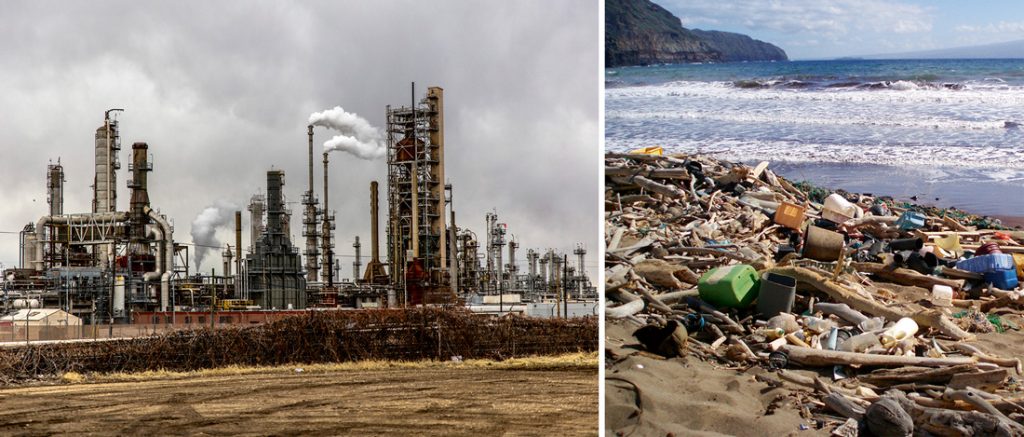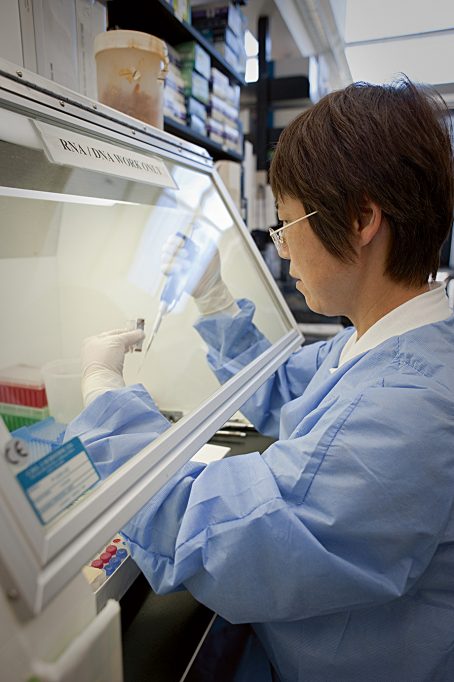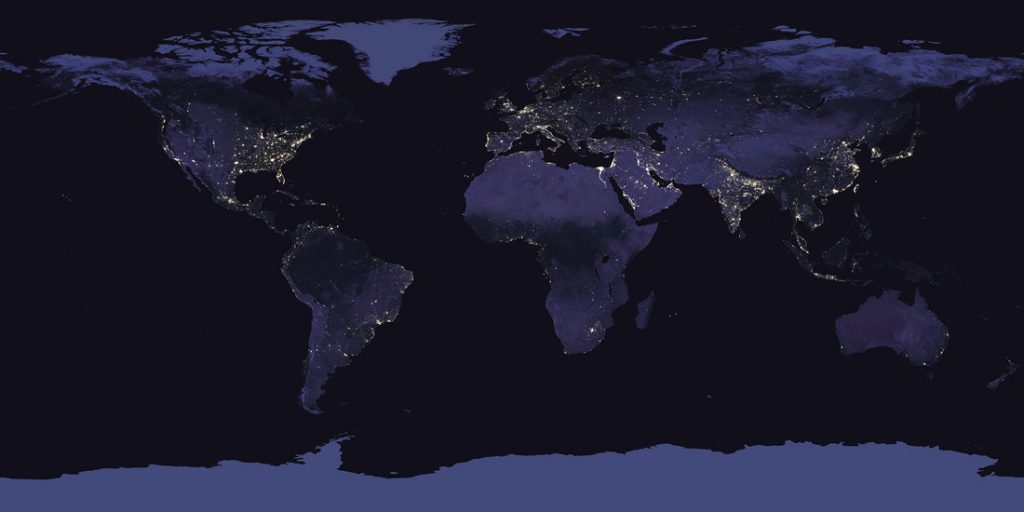Science and the challenges of our time
A reflection on the future role of scientific research

Science has developed as a particularly extensive and intense intellectual activity since the end of the nineteenth century. Its results, and those from a complex set of technologies, are shaping the lives of our citizens and influencing some of the global parameters of our planet. In this context, science professionals formulate their objectives in terms of the problems faced by their disciplines as a result of internal dynamics, as well as the demands made by society. For scientists, reflecting on these different perspectives to define research activities is a necessity. Thus, they should also participate in reflecting on the issues that are considered important for the future of our society.
Keywords: science and society, challenges of science, matter sciences, life sciences.
Introduction
Individuals from the human species take a long time to grow. When a steer or a colt, which are very close to our species, are born, it takes them just a few minutes to stand up and run, and it takes just a few years for them to be fertile and become adults. Our children take months to walk, years to be fertile, and even longer until we consider them ready to become full members of our society. Different human groups have managed this process, which is vital for survival, in a way that allowed them to adapt to their environment and these processes have profoundly changed over the centuries and millennia, depending on the part of the planet. Adults and older people have most likely always wondered how the young will manage to survive in the world they are left with, and at this point in history, this is a central question in our debates. In order to resolve it, we must resort to one of the main tools we have devised to try to understand the world we live in, the one we call science.
«One of the general feelings at the beginning of the 21st-century is that we live in an accelerated world»
One of the general feelings at the beginning of the twenty-first century is that we live in an accelerated world. This is true in some respects, for example, the systematic use of electronic devices that entered our lives only fifty years ago and has considerably changed our lives. It is also true that the number of members of our species has increased rapidly in recent times, especially in cities (DESA, 2017). As a result, our need for all kinds of resources has also increased. At the same time, the structure of our society, as well as our families, is changing rapidly. Coming back to children, during the last century their numbers have fallen dramatically in the most affluent societies; most families now have one or two children, while the number of couples who choose not to have children is increasing and very few now have ten or twelve, which was common only a short time ago. This adds to the continued increase in life expectancy resulting in a society whose age structure is shifted towards older people. This change is being strongly felt in European societies. The effects of advances in medicine and especially contraceptives and antibiotics, among other factors, have a lot to do with this.

The increase in life expectancy and the drop in birth rate of the most prosperous societies results in an age structure shifted towards older people. This change is being strongly felt in European societies. / Thiago Barletta, Unsplash
Because of this situation, there is a certain urgency in answering the question of what world we are leaving to our children and grandchildren. The societies of previous centuries were certainly concerned about the prospect of another war like the one they had just suffered, the consequences of a bad harvest which could prevent them from producing enough food, or an epidemic in which they would lose family members. There were individuals in all these societies who went out on clear nights to follow the movement of the stars or who wondered what was behind the mountains rising on the horizon or how people from distant countries lived. But, more specifically, some tried to solve their problems and transmit what they had found to their descendants. Our situation is somewhat similar now, but there are many of us, we are all connected in one way or another, and we have created a complex society that provides us with many solutions, but also creates many needs. We are also aware that now we know much more about the world we live in and we need to find ways to use what we know to solve global, regional, and personal problems (Puigdomènech, 2016).
Matter sciences
The twentieth century was the century of physics. Towards the end of the previous century someone said that we already knew everything about the forces that emerge between material objects, such as gravity, electricity, and magnetism. Likewise, some of the ideas that gave rise to the atomic theory of matter had already been formulated, mainly by the nascent discipline of chemistry. But the limitations of the classical physics theories appeared very early in the century and in the period leading up to World War II new and grand conceptions of physics were developed: what we call quantum mechanics and the theory of relativity. These theories have provided a very complex framework for explaining the material world, from the universe to the most basic components of matter. These theoretical concepts have had important consequences for our conception of the world, but also for our lifestyle. We only need to remember that the understanding and development of semiconductors relies on quantum theory and that this is also the origin of the electronics and microelectronics upon which we base the digital applications that are now revolutionising our world. Matter sciences are therefore indebted to the global vision of the forces that govern matter. These were provided by physics and have been essential for the emergence of technological applications that have radically changed human life in recent centuries.
«We have created a complex society that provides us with many solutions, but also creates many needs»
The success of today’s physics theories does not conceal their shortcomings. The lack of a global theory integrating quantum physics and relativity, the lack of an explanation for the matter-antimatter asymmetry, or our ignorance regarding the nature of dark matter and energy in the universe are some of the current gaps in physics theory. Regarding the applications, the control of nuclear fusion to obtain a powerful and non-polluting source of energy, the development of light applications, quantum computers, or new materials are some of the challenges facing several physics disciplines. Evidently, matter sciences, which include physics and chemistry, are the destination for those who seek solutions in the production of energy without affecting the climate, or for those who want to reduce excessive waste of all kinds, one of our essential problems. Society wonders if the world we are leaving to our descendants is one in which they will be able to live with a similar level of well-being to ours.
Life sciences
In the second half of the twentieth century, life sciences had somehow taken over as leaders in the creation of scientific ideas. On the one hand, concepts formulated in the nineteenth century such as biological evolution, the laws of hereditary transmission, or cell theory laid the foundation for coherent conceptions about the way living organisms function. On the other hand, physics or chemistry approaches were applied to materials and biological populations and have provided an avalanche of new information making it possible to study everything ranging from the most intricate detail of living organisms to the behaviour of large ecological systems. This way, it was possible to formulate a coherent vision of the origin and evolution of biological species, including humans. We have progressively come to understand the main pathologies that affect our species and we are trying to understand the consequences of our intensive direct or indirect action on all the species that populate the planet.

The most important sources of energy today are fossil fuels and their massive use is one of the causes of the changes we currently see on our planet’s climate. The picture shows a refinery in West Bountiful (Utah, USA). / Thiago Barletta, Unsplash
Those who seek solutions to the production of energy without effects on the climate or who want to reduce excessive waste of all kinds are destined to study matter sciences. The picture shows plastic debris and other types of waste at the Kanapou Bay beach, in Hawaii (USA). / NOAA Photo Library
This far into the twenty-first century, biology continues to face important challenges at the frontiers of its research. We are exploring details related to the components of biological matter and their interactions in the cellular environment up to the atomic level. The knowledge we have accumulated over the last half century is now so vast that we can combine its complex data to provide integrated insights into the way living things function. Yet, we are still trying to understand the behaviour of large biological systems and their interactions with the environment. All of this makes it possible to integrate data from a wide variety of sources that provide an overview of the functioning of cells, organisms, or ecosystems at a level that was impossible until very recently. It is possible that the great methodological developments that have taken place in recent years have been brought about by the appearance of several new approaches to the analysis of the large molecules that make up living organisms, especially DNA. These developments have recently accelerated, particularly DNA sequencing and biocomputational analyses, but also the analysis of images that influence many fields of biology, including the analysis of large animal and plant populations. These methods have allowed issues of great social impact to be raised. Two examples are genetic analyses of individual humans and the use of this data in medical decisions, and the results of global-scale climate change studies.

The challenges of science
Matter sciences and life sciences are the two major divisions of today’s scientific endeavours. Obviously, we could debate whether to include the disciplines that deal with human society as sciences, or the status of mathematics or engineering in this context, and this discussion is especially relevant now that the boundaries between disciplines are becoming increasingly blurred. But there is another perspective we must not forget. It can be argued that science – or natural philosophy, as it was also called until the Enlightenment – emerged from human curiosity leading people to wonder why things happen. However, we must accept that science is also an essential element in providing answers to the main problems facing human beings as individuals and as a society, especially in today’s world.
These general challenges were the subject of reflection in international-level institutions created after World War II and have recently led to the formulation of the so-called sustainable development goals (SDGs) adopted by the United Nations in September 2015 (UN, 2015). These are seventeen goals, each with a very different scope and potential impact on the challenges for science. Of course, ending hunger or increasing human health are two objectives that have always been present in life-sciences research. Achieving general access to water and energy is also a constant objective for physics research, as are other goals related to the impacts of human activity on the balance of the planet, such as the climate or underwater and terrestrial life. We are currently wondering how new digital technologies and robotics will potentially impact employment. We must also bear in mind that research itself can only be carried out in an environment of freedom and peace and must also aim to reduce inequalities between human populations and, especially, gender inequalities, as the SDGs demand.
«One of the current challenges for science is to give citizens the best possible information so that they can make the necessary decisions»
From a more general point of view, we must also argue that hunger, bad weather, or disease are problems that humans have always tried to solve through knowledge and research, and these problems are very similar to those faced by our ancestors 12,000 years ago, when Neolithic society began. On the one hand, our society now has much higher requirements than less than a century ago. Let us think, for example, of our need to access energy or digital communication networks, two resources that have only been available for less than a century. On the other hand, the human population has grown exponentially over the last hundred years and all sorts of activities have developed in such a way that their environmental impact is starting to be felt on a planetary scale.
These problems are partly because of the application of our knowledge. For example, one of the reasons (not the only one) for the increase in the size of the human population is the application of our medical knowledge, which has extended our life spans and given us better health; the increase in the size of the human population is one of the factors that has produced a huge impact on our society and on the demand for all sorts of resources. For example, one of the essential resources is food, which is a basic need for everyone. The demands for food put pressure on agricultural and livestock production, which in turn, relies on the occupation of land and the use of water, fertilisers, and pest control products to maintain production (FAO, 2018). Our society has gradually adapted to the accessibility of some energy sources for activities that are essential to our lives today, such as the transport of people and goods or the use of several machines in our homes, our industries, and our lives (IEA, 2017). Among the most common systems are those that allow us to use digital technologies based on electronic systems with which we process all types of data and communicate extensively. The most important sources of energy today are fossil fuels, and their massive use is one of the causes of the current changes in our planet’s climate (IPCC, 2014). The same could be said of resources such as metals or building materials, and all this produces a volume of waste which we often do not know how to process.
Because of the impact of an increasing population, massive use of energy and other resources, waste generation and its effects on the climate and on biological diversity, we must reflect on how we use our knowledge and new technologies. As we have previously seen, this knowledge has considerably expanded in recent years. In life sciences we have explored miniscule cell functions and mechanisms related to the transmission of genetic information. This knowledge also generates possibilities for acting upon this information, i.e., to modify the genes of different biological organisms – technology which has already been used in bacteria, fungi, plants, and animals within the regulations of different countries and surrounded by intense debates. So far, the debate on the genetic modification of the human species has remained closed: this possibility has been rejected except in very specific cases of tissues that could be modified outside the human body. However, the emergence of new, more targeted genetic modification techniques has put this debate back on the table. At the other end of the spectrum of biological analysis, at the planetary or ecological-environment scale, the question of whether to act is also the subject of debate.

Therefore, in the first decades of the twenty-first century, we find ourselves in a situation in which, for part of the population, humans’ access to basic resources is guaranteed as never before. Moreover, a wide range of technologies, for example, in energy or telecommunications, have gradually appeared and given rise to new dimensions of human life which may become new rights that must be guaranteed. Human activity has simultaneously grown exponentially and this is producing planetary effects that may affect the ability of future generations to attain levels of well-being like those enjoyed by at least some of the human population today (large minorities still do not have access to these levels of well-being). Thus, we find ourselves in a situation where we must make complex decisions without the mechanisms required to respond to them, even though our knowledge is broader and deeper than ever and therefore, we should be better prepared to face all kinds of challenges.
In this context, the public demands on those who cultivate science are numerous and often contradictory. One of the current challenges for science is to give citizens the best possible information so that they can make the necessary decisions and provide, where possible, the tools to act in the direction society decides. It is also a challenge to ensure that the results of research reach the intended recipients as soon as possible. This is done through industrial activity, which has its own interests and dynamics and can result in conflicts of interest that can damage the credibility of science in the eyes of citizens. The debate on the challenges of science cannot be isolated from the concerns of society as a whole. It is also true that the solutions to many of the questions facing our society are not only scientific and technological, but without access to the best scientific analysis and technologies, the solution to most of them will never be found.
REFERENCES
DESA. (2017). World population prospects: The 2017 Revision. Key findings and advance tables. New York: United Nations. Department of Economic and Social Affairs. Retrieved from https://www.un.org/development/desa/publications/world-population-prospects-the-2017-revision.html
FAO. (2018). The state of food security and nutrition in the world. Building climate resilience for food security. Rome: FAO. Retrieved from http://www.fao.org/state-of-food-security-nutrition/en/
IEA. (2017). World energy outlook 2017. Paris: International Energy Agency. Retrieved from https://www.iea.org/weo2017/
IPCC. (2014). Climate change 2014. Synthesis Report. Geneva: IPCC. Retrieved from http://www.ipcc.ch/report/ar5/syr/
Puigdomènech, P. (2016). Desafíos del futuro. Doce dilemas y tres instrumentos para afrontarlos en el duodécimo milenio. Barcelona: Crítica.
UN. (2015). About the Sustainable Development Goals. Retrieved from https://www.un.org/sustainabledevelopment/sustainable-development-goals/





